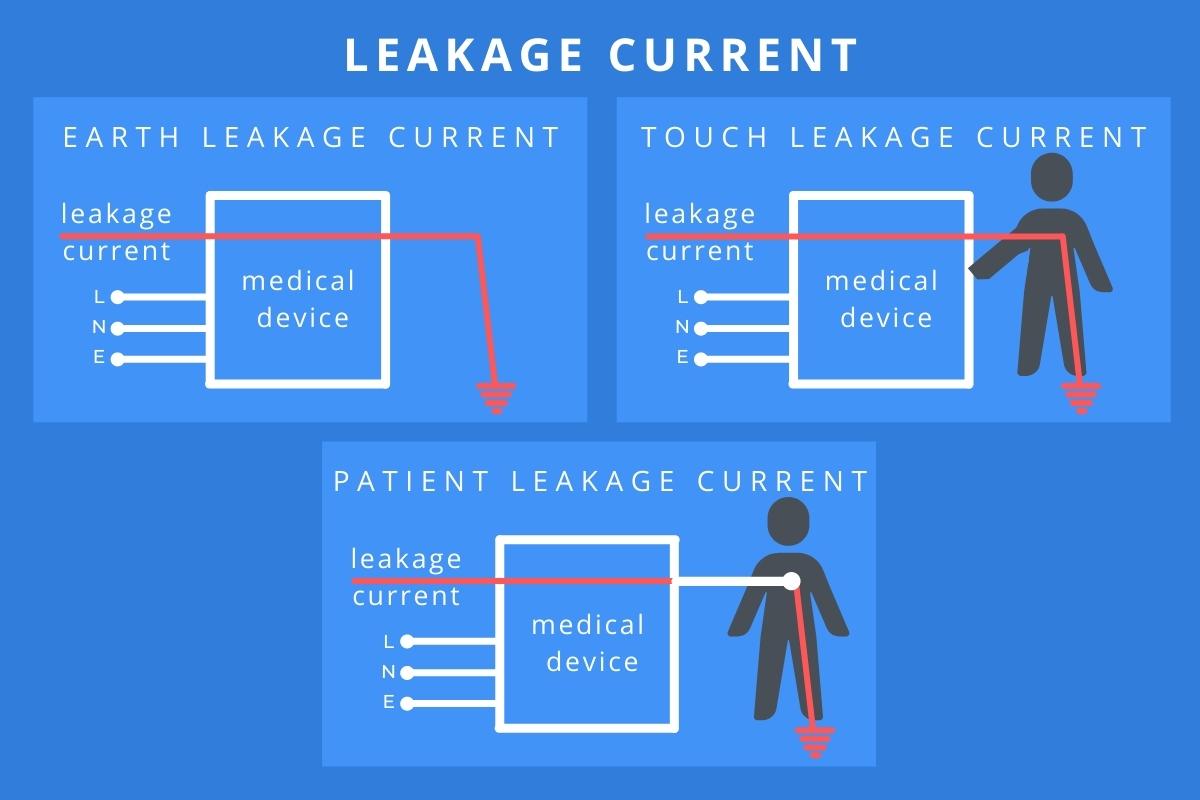Safety is a critical factor in medical device design, so it is important to understand the potential hazards of different types of leakage current (earth, touch, and patient). Each of these types requires a Means of Protection (MOP) to keep patients and caregivers safe.
What is leakage current?
Leakage current is an electrical current flowing along an unwanted path instead of its intended circuit or when power should be completely off. It can potentially be found in any device or system that uses electricity. It may cause circuit-breaker tripping, wasted energy in the form of “vampire power,” overvoltage, RF noise, fire, or electrical shock as the current flows towards the easiest path to ground (which might be through a human body).
What causes leakage current?
Leakage current is caused by several different things. In electronics, those causes might include: the unwanted flow across a transistor; insufficient insulation or grounding; the unwanted discharge of a capacitor due to material imperfections, too high a voltage, or environmental conditions such as temperature.
What types of leakage current can occur in medical devices?
In medical devices, there are three types of leakage current – earth, touch, and patient.
- Earth leakage current is the current taking the path of least resistance moving eventually to the earth ground. It is also known as earth leakage or earth line leakage.
- Touch leakage current is the current from an improperly grounded device that flows through a body if the person touched the outside of the device. It has also been called chassis or enclosure leakage.
- Patient leakage current is the current from patient-connected devices (like ECG electrodes) that flows from patients to earth ground.
Why is minimizing leakage current so important in medical devices?
Mitigating leakage current is always important but it is vital in medical devices. Patient caregivers need to be protected from shock hazards, but usually react quickly to move away from the shock source. Patients themselves are generally much more vulnerable because they may not be able to remove themselves from the source of shock (while under anesthesia or immobile, for example), or because their medical conditions mean even a small current can be harmful or fatal.
For these reasons, medical device standards are much more stringent than for commercial-grade devices. Each type of leakage current – earth, touch, and patient – requires a Means of Protection (MOP) to keep from exceeding designated safe limits around patients.
Some standards define the area within six feet of the patient as the “patient vicinity.” Within that vicinity, leakage current safety standards apply to both the medical device and also to any auxiliary device (such as a PC) that is connected to it.
Using medical-grade power supplies is a crucial part of patient and caregiver safety when designing and using medical devices.
(Leakage Current in Medical Devices, Leakage Current in Power Supplies, Leakage Current Requirements for Medical Power Supplies)
________________________
At RAM Technologies, we understand the importance of safe, reliable power for medical devices. Our power supplies have extremely low leakage current — 250uA max at 264 Vac 60 Hz.
